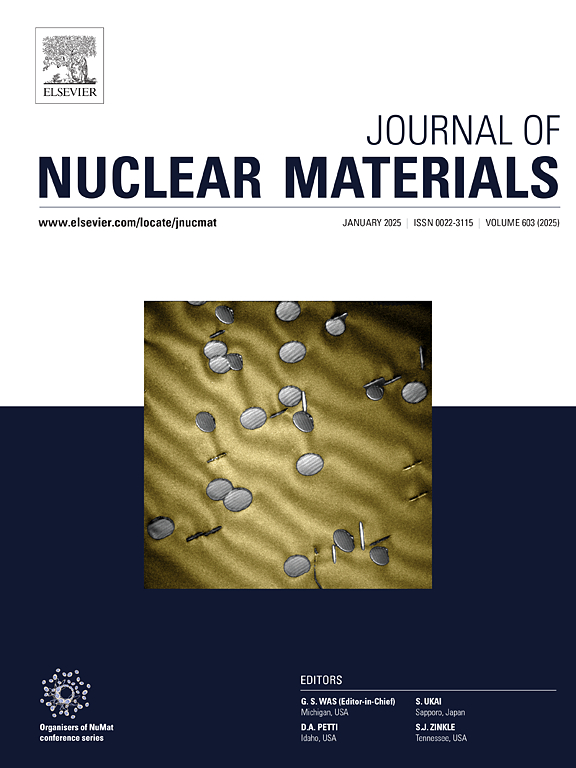Exploring the influence of alloying elements (Zr, Si, and V) on the corrosion behavior of FeCoNiCr-based high entropy alloys in supercritical water environment
IF 2.8
2区 工程技术
Q3 MATERIALS SCIENCE, MULTIDISCIPLINARY
引用次数: 0
Abstract
This study investigated the effect of alloying elements Zr, V, and Si on the corrosion behavior of FeCoNiCr-based high entropy alloys in supercritical water. Adding Zr decreased corrosion resistance owing to the formation of a thinner Cr2O3 outer layer and a mixed Cr2O3 and ZrO2 inner layer. Adding Si formed a complex oxide film with a triple-layer structure with pores and cracks, accelerating corrosion. By contrast, adding V improved corrosion resistance because the formation of a compacted V0.87Cr0.13O2.7 layer inhibited the diffusion of anions and cations. The corrosion mechanisms were also discussed.
求助全文
约1分钟内获得全文
求助全文
来源期刊

Journal of Nuclear Materials
工程技术-材料科学:综合
CiteScore
5.70
自引率
25.80%
发文量
601
审稿时长
63 days
期刊介绍:
The Journal of Nuclear Materials publishes high quality papers in materials research for nuclear applications, primarily fission reactors, fusion reactors, and similar environments including radiation areas of charged particle accelerators. Both original research and critical review papers covering experimental, theoretical, and computational aspects of either fundamental or applied nature are welcome.
The breadth of the field is such that a wide range of processes and properties in the field of materials science and engineering is of interest to the readership, spanning atom-scale processes, microstructures, thermodynamics, mechanical properties, physical properties, and corrosion, for example.
Topics covered by JNM
Fission reactor materials, including fuels, cladding, core structures, pressure vessels, coolant interactions with materials, moderator and control components, fission product behavior.
Materials aspects of the entire fuel cycle.
Materials aspects of the actinides and their compounds.
Performance of nuclear waste materials; materials aspects of the immobilization of wastes.
Fusion reactor materials, including first walls, blankets, insulators and magnets.
Neutron and charged particle radiation effects in materials, including defects, transmutations, microstructures, phase changes and macroscopic properties.
Interaction of plasmas, ion beams, electron beams and electromagnetic radiation with materials relevant to nuclear systems.
 求助内容:
求助内容: 应助结果提醒方式:
应助结果提醒方式:


